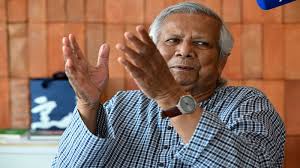PM Modi and Russian President Putin have redefined traditional boundaries for stronger strategic ties
In the end, it was hugplomacy which made the headlines as Prime Minister Narendra Modi called on “great friend” Vladimir Putin and described the Indo-Russian relationship as an unprecedented partnership. In fact, it was the informal talks at Sochi last year and the personal chemistry between Putin and Modi that have reset the Indo-Russian axis of cooperation that, over time, was fraying at the edges and taken for granted. Clearly, in the context of changed geopolitics and multi-polar dynamics, there was a drift not too long ago as both nations were guided by their nationalist and political imperatives. At one end, the ties were tested by India’s proximity to the US and the dominating spectre of that superpower on mutual trade and business, particularly defence. On the other was Russia’s tilt towards China and even arms deals with Pakistan. Going by the chief guest status accorded to Modi for the Eastern Economic Forum meeting at Vladivostok, introducing India as a decisive economic player in the Russian-Pacific region and holding the 20th bilateral summit there as an example of expanded cooperation, the relationship is not only on an even keel but is looking to spread to newer areas and won’t just depend on traditional convergence. And with the heft of Russia’s position that it respected “India’s Constitutional space” on Kashmir, India did manage to swing international opinion. Both Modi and Putin have now realised that while global politics is fluid and could force the need to calibrate individual responses, bilateral relations would be immune to any external influence and work towards shoring each other up. In that sense, the personal understanding between the two leaders has indeed reinvented the wheel. As Putin said, it would now prioritise “mutual benefit.”
Russia continues to be the biggest exporter of arms to India despite our buys from the US and after the S-400s, it will also help in making AK-203 rifles. So it is now looking beyond the dependence on defence contracts. The Vladivostok summit is expected to promote stable mutual growth of trade turnovers, aiming to touch $30 billion by 2025. While ONGC Videsh has been an early player in the region with the Sakhalin oil fields, joint development of oil and gas fields in both Russia and India is in the pipeline. This will help reduce our dependence on the Gulf. And since nuclear energy constitutes a fundamental building block for strategic partnership, Russia remains the only foreign country in India involved in practical construction of nuclear reactors. In the process of building six power units of the Kudankulam nuclear power plant, it will now promote joint projects with India, too, in third countries, like it is doing at the Rooppur nuclear plant project in Bangladesh. The Russian far east is expected to allow new areas for Indian investment and the 25 agreements include mining mineral resources, harnessing energy, pharmaceuticals and R&D, partnerships in education, agriculture, aquaculture, tourism and skilled labour. Most importantly, the Vladivostok-Chennai sea route, which was once used by Russian cargo ships, will now be developed as a key transport and logistics corridor. On its part, the Russians will enhance industrial cooperation and contribute to infrastructure development through “Make in India.” For example, they will collaborate on the Nagpur-Secunderabad high-speed corridor. And now that they will be training and selecting astronauts for Gaganyaan, there will be increased space cooperation, too. Of course, Russia will have to consider the Indo-China anxieties within the RIC (Russia, India, China) club if it wants to be a pivot of the Asia-Pacific region. And there will be divergence on foreign policy with regard to the Pacific waters, the territoriality of which has been defined by the US as “Indo-Pacific”, establishing our primacy in any policy there while Russia disapprovingly calls it “Asia-Pacific.” Of course, Moscow has sought to deflect concern from its endorsement of China’s Belt and Road Initiative by seeking a more extensive Eurasian partnership involving India in the Eurasian Economic Union (EAEU). Russia insists that every country in the region has its own vision and the idea should be not to exclude anybody from dialogue. Cooperation within G20, BRICS, SCO, RIC, EAS and other multi-lateral formats will be Russia’s way to align India to mutual interests. Of course, finding convergence among divergence will be a tall order but at the moment the idea is to soften the latter with the cushion, or rather bear hug, of the former.
Writer: Kalyani Shankar
Courtesy: The Pioneer








 OpinionExpress.In
OpinionExpress.In















Comments (0)